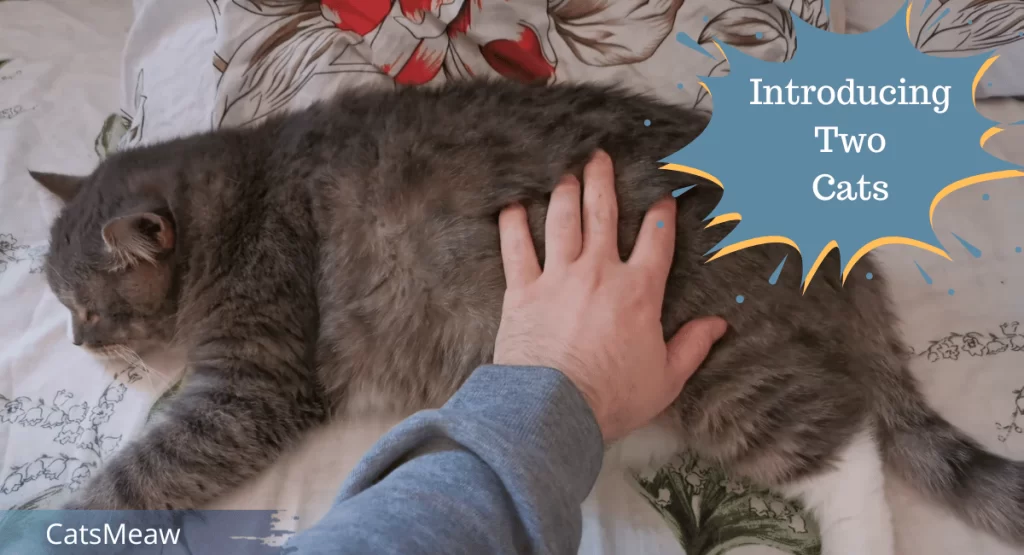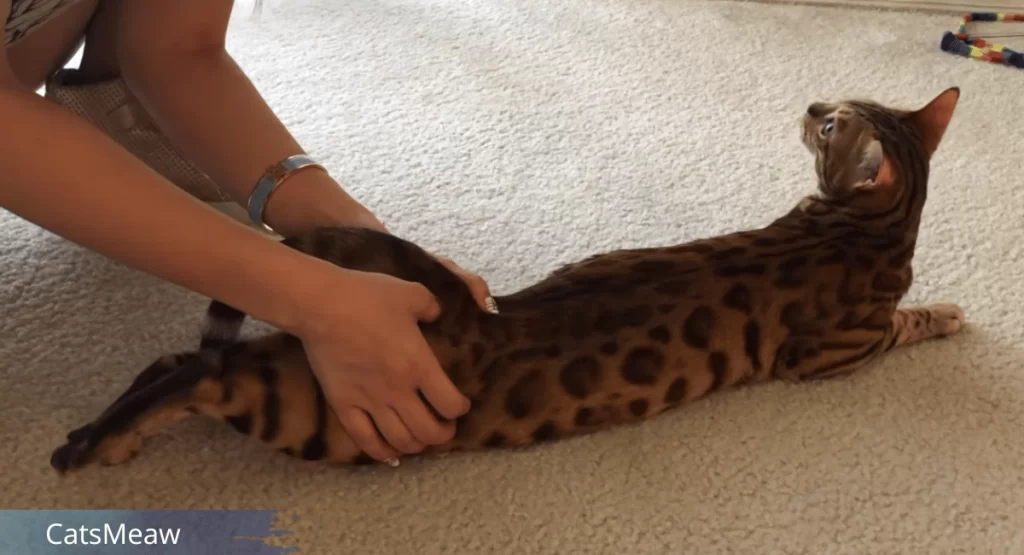If you have a cat, then it’s crucial to understand and address the needs of your cat when she is in heat. Cats go into heat when they are ready to mate and reproduce, and this can be a challenging time for both the cat and the owner. In this article, we will explore the various aspects when your cat in heat and provide guidance on how to handle this situation with care and compassion.

Table of Contents
Understanding Cat Heat Cycles
A cat’s heat cycle, also known as estrus, is the period when she is fertile and actively seeking a mate. It typically occurs every two to three weeks, starting as early as six months of age. During this time, the cat’s behavior and physical changes can be quite noticeable. She may become more affectionate, restless, and vocal.
Additionally, you may observe her assuming a mating position, with her rear end raised and tail to the side, as an invitation to male cats.
Signs That Your Cat is in Heat
It is essential to recognize the signs that indicate your cat is in heat. These signs can vary from cat to cat but generally include increased vocalization, more frequent urination, and rubbing against objects or people. You may also notice a change in her behavior towards other pets in the household.
Some cats may display aggressive tendencies during this time. It is important to differentiate these behaviors from signs of illness or distress. If you are unsure, consult with your veterinarian to confirm that your cat is indeed in heat.
The Importance of Spaying or Neutering Your Cat
One of the most effective ways to manage a cat in heat is to have her spayed. Spaying is the surgical removal of the uterus and ovaries in female cats. This procedure not only prevents unwanted pregnancies but also eliminates the heat cycle altogether. Neutering, on the other hand, involves the removal of the testes in male cats. Both procedures are safe and commonly performed by veterinarians.
Spaying or neutering your cat offers numerous benefits beyond just controlling the heat cycle. It reduces the risk of certain reproductive cancers and eliminates the urge to roam, which can lead to accidents or injuries. Additionally, spayed or neutered cats tend to have fewer behavioral problems, such as aggression or marking territory.
Related: How to Calm a Cat in Heat Naturally
Remember, it is always recommended to consult your veterinarian to discuss the optimal time for the procedure and any potential risks or complications.
How to Keep Your Cat Comfortable During Heat
While spaying or neutering is the best long-term solution, there are ways to keep your cat comfortable during her heat cycle. Providing a quiet environment and calm may help reduce stress and anxiety. Create a cozy spot with soft bedding where she can relax and feel secure.
Some cats may appreciate the use of pheromone diffusers or sprays, which can have a calming effect. These products almost mimic the natural pheromones that cats release when they feel content and safe.
Regular playtime and exercise can also help distract your cat and redirect her energy. Engage her in interactive toys or games that simulate hunting and play. This physical activity can alleviate restlessness and provide mental stimulation. Additionally, consider providing a scratching post or cat tree to satisfy her natural instinct to scratch and climb.

It’s important to remember that each cat is unique, so experiment with different strategies to find what works best for your furry companion.
What Not to Do When Your Cat is in Heat
When your cat is in heat, there are certain things you should avoid to prevent any unintended consequences. Firstly, do not try to breed your cat unless you are a professional breeder with proper knowledge and resources. Breeding should only be done under controlled circumstances to ensure the health and well-being of both the mother and the kittens.
Secondly, never punish your cat for exhibiting normal heat behaviors. Punishment can lead to increased stress and confusion, potentially exacerbating the situation. Instead, try always on providing an understanding environment and supportive for your cat.
Tips for Managing a Cat in Heat
Managing a cat in heat requires patience and proactive measures. One way to distract your cat from her heat cycle is by engaging her in grooming sessions. Cats are meticulous groomers, and the act of grooming can help calm them down. Additionally, consider providing a comfortable spot for your cat to rest, away from other pets or distractions.
This will allow her to relax and minimize any potential conflict or tension. Finally, if you have multiple cats in your household, it may be beneficial to separate them temporarily to avoid any mating attempts or aggression.
The Benefits of Spaying or Neutering Your Cat
The decision to spay or neuter your cat goes beyond managing her heat cycle. There are several long-term benefits associated with these procedures. Spaying significantly reduces the likelihood of your cat developing mammary tumors or uterine infections. Neutering eliminates the risk of testicular cancer and reduces the occurrence of prostate problems in male cats.
Related: Cat in Heat: How Long Does it Take?
Furthermore, spayed or neutered cats are less likely to exhibit undesirable behaviors, such as urine spraying or territorial aggression. By opting for these procedures, you are promoting the overall health and well-being of your feline companion.
Conclusion
When your cat is in heat, it is crucial to understand her needs and provide appropriate care. Recognizing the signs of a cat in heat, such as increased vocalization and restlessness, is the first step towards managing this situation. Spaying or neutering your cat is the most effective long-term solution, offering numerous health benefits and eliminating the heat cycle altogether.
In the meantime, creating a comfortable environment and engaging your cat in play and grooming sessions can help alleviate her discomfort. Remember, always check-up with your veterinarian for personalized guidance. By addressing your cat’s needs during her heat cycle, you can ensure her well-being and maintain a harmonious relationship between you and your feline companion.
